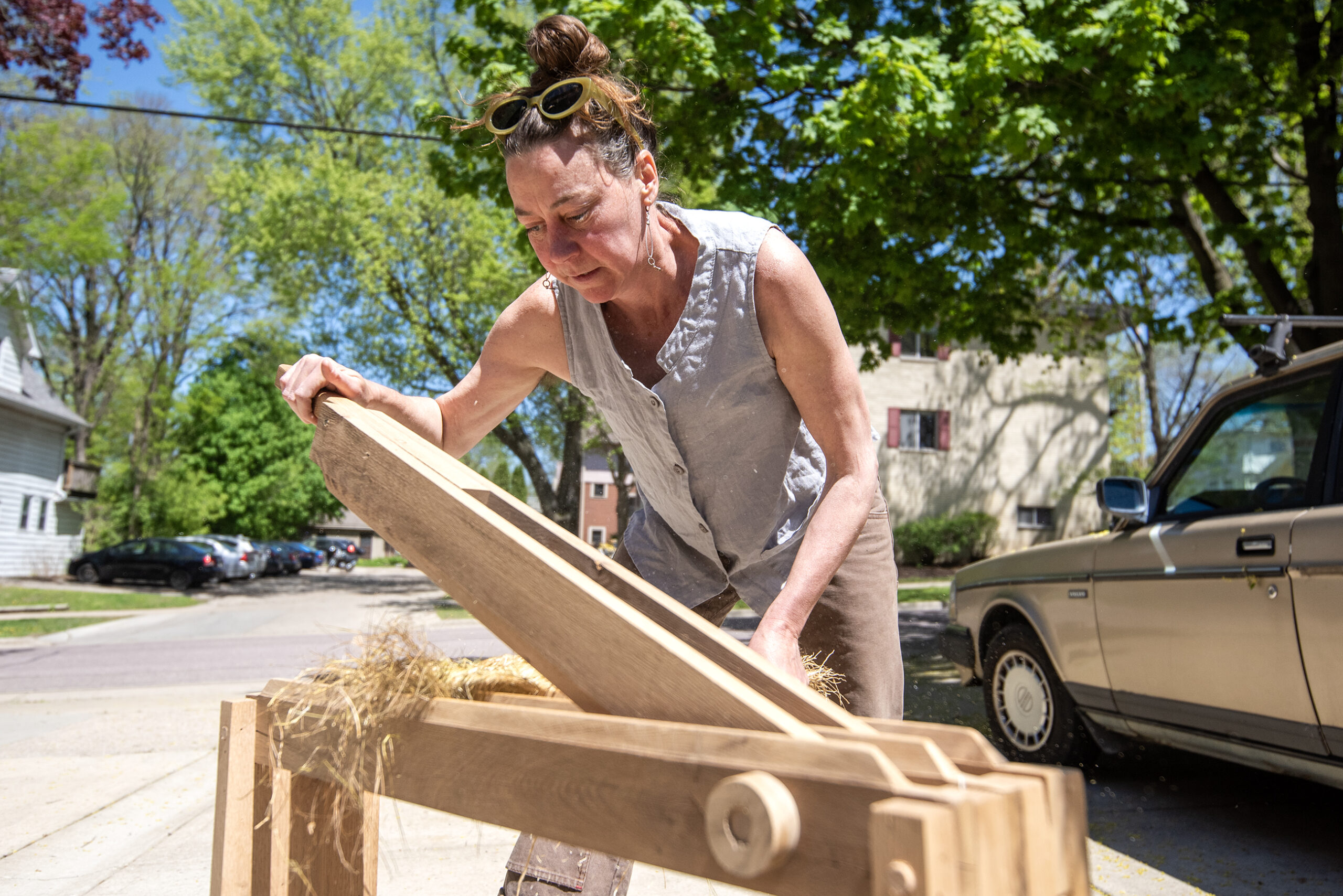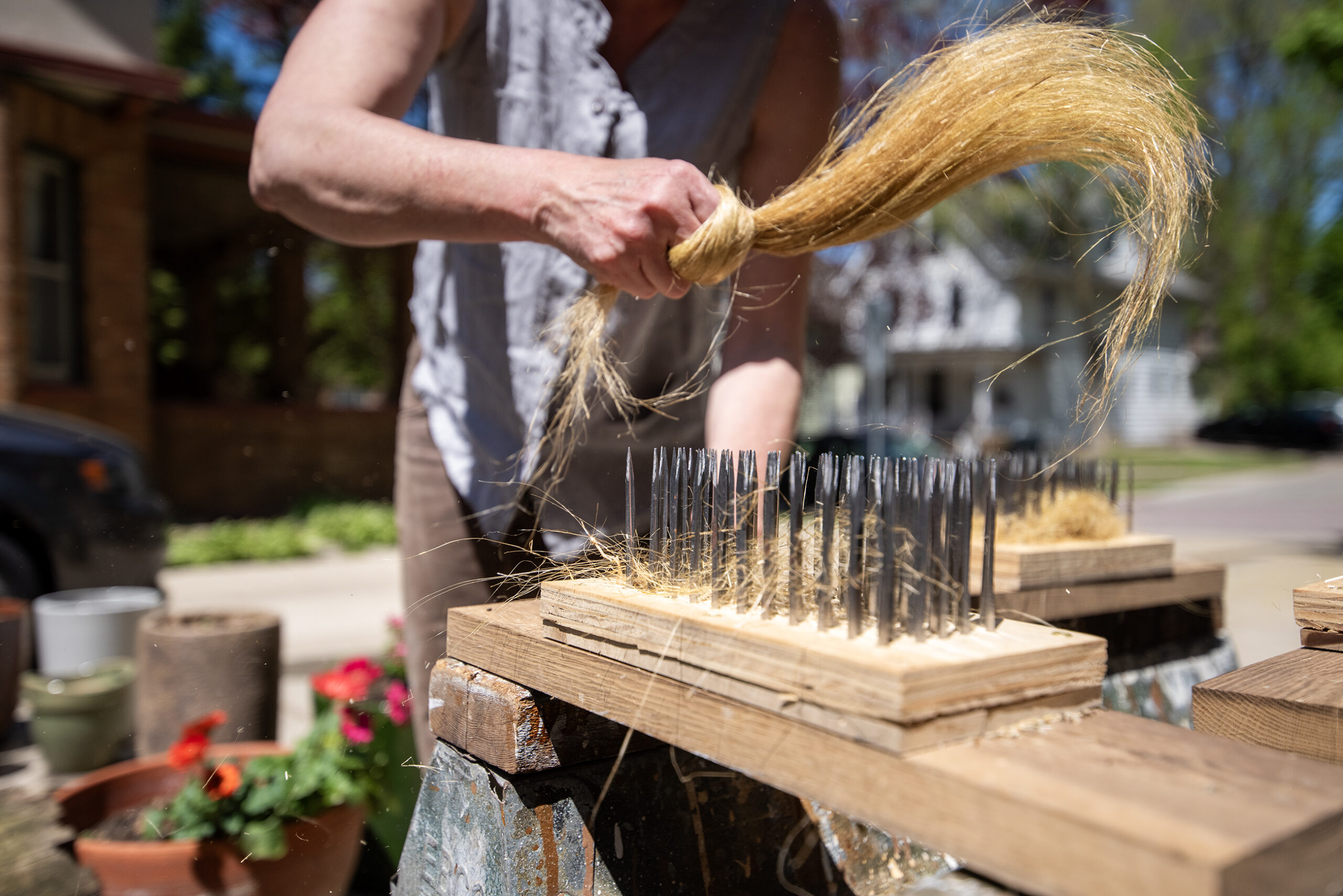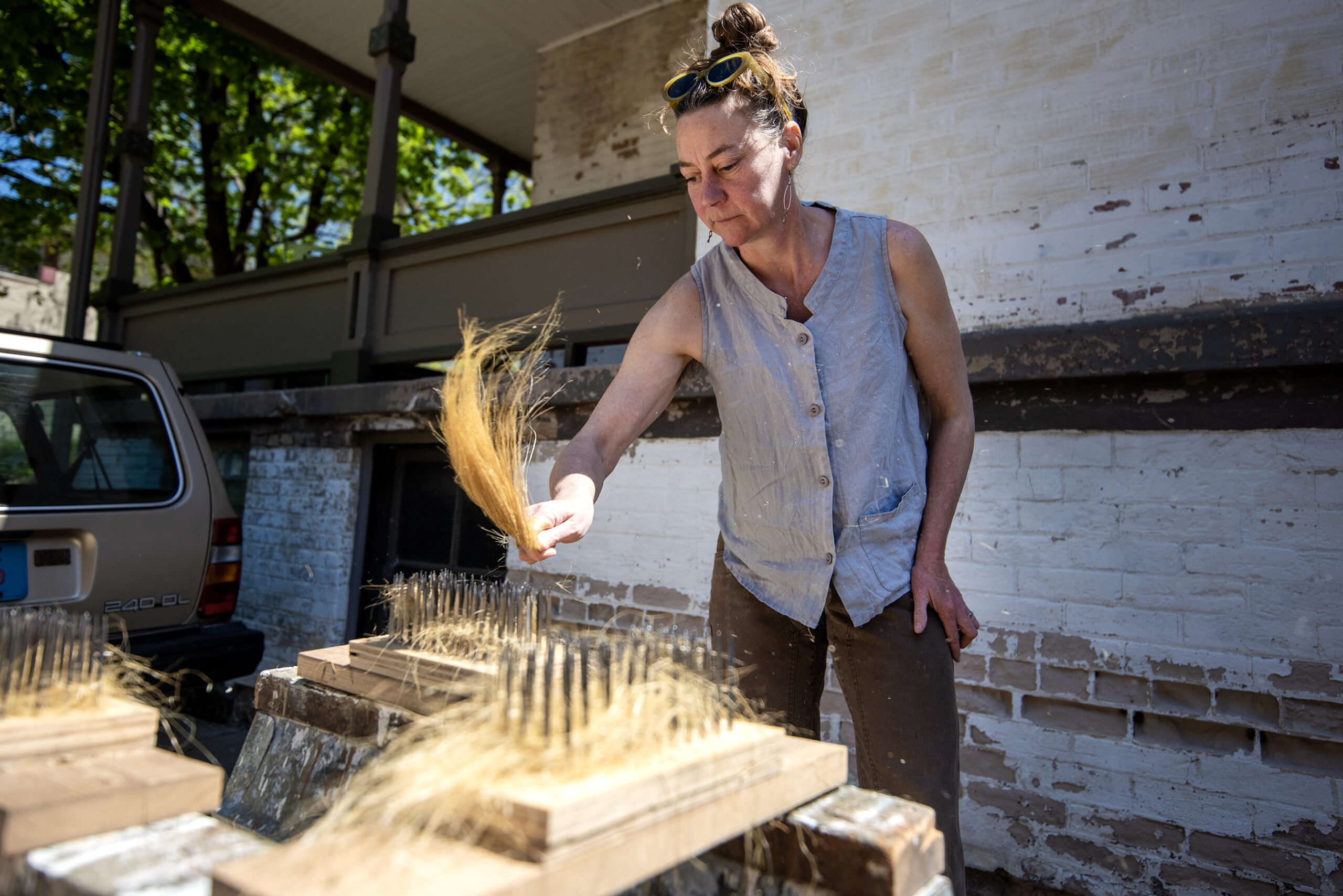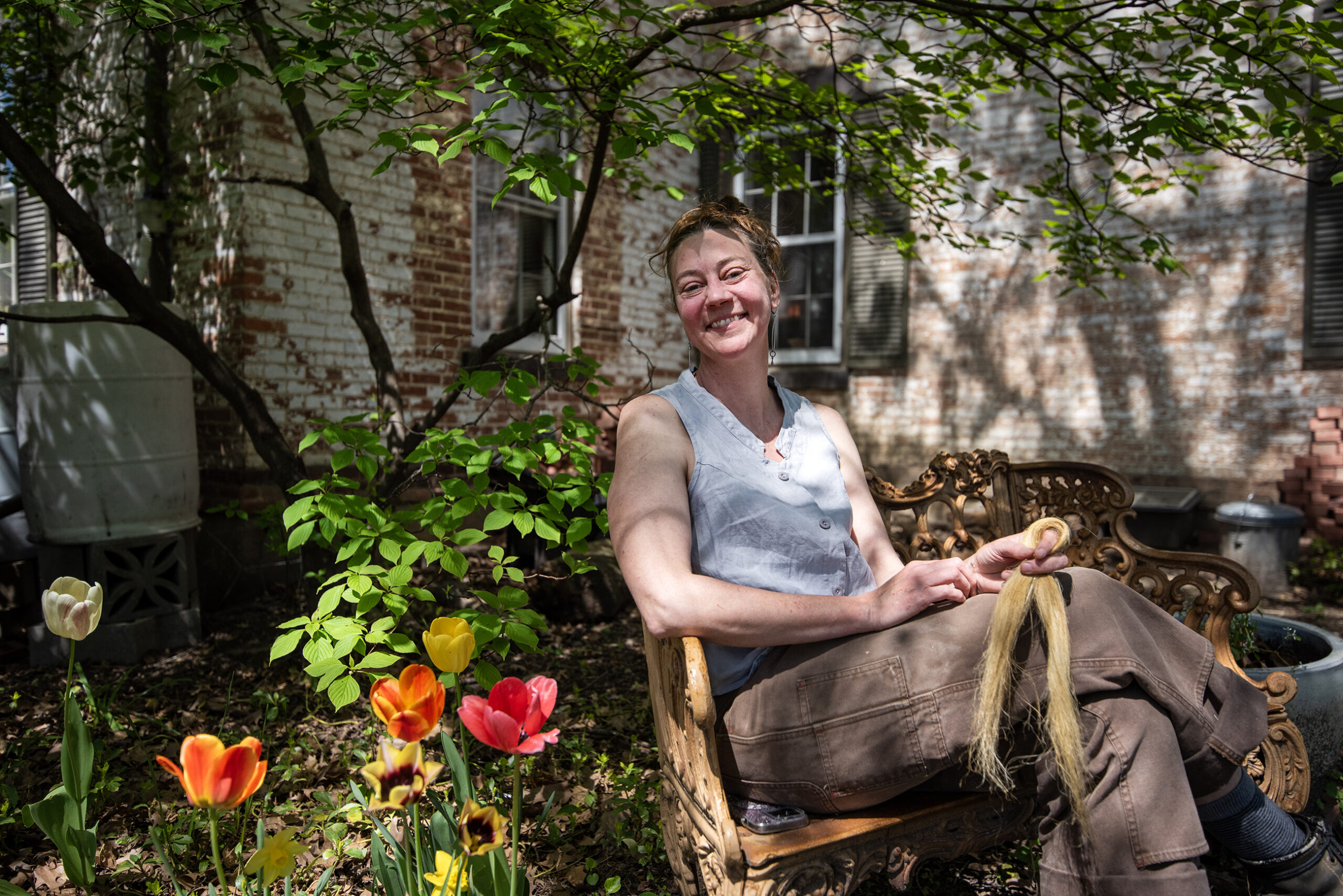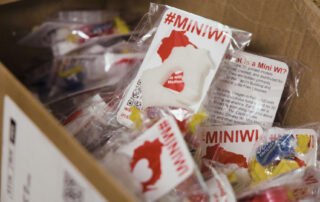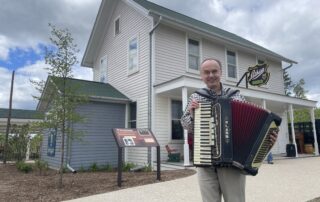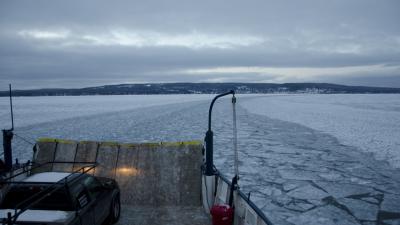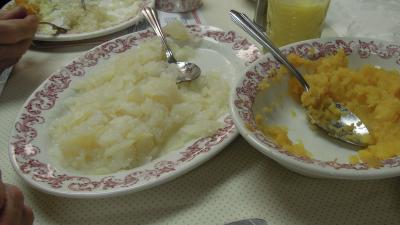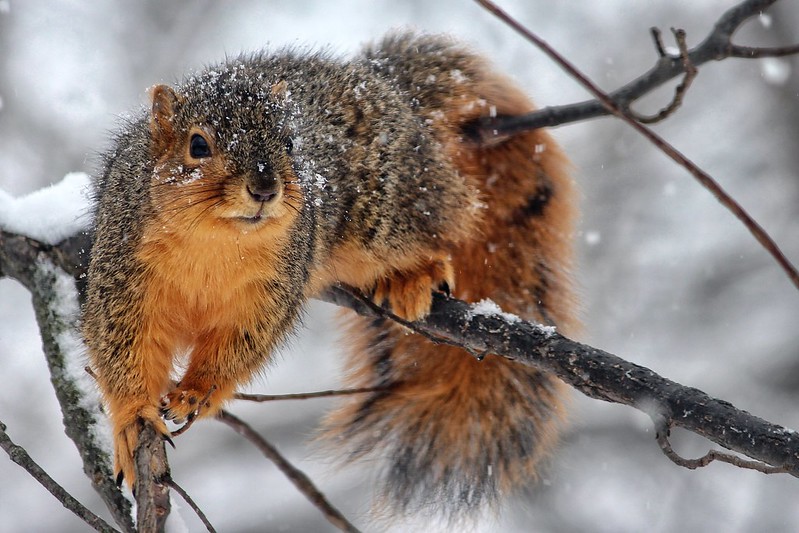Leslie Schroeder has a dream.
That dream is to have a flax-to-linen textile industry in Wisconsin. Inspired by the local food movement, Schroeder wants to create a market for sustainable and quality local clothing.
To jumpstart that effort, the Madison resident helped create the Midwest Linen Revival. The organization hopes to educate farmers, artisans and textile enthusiasts on how to help the industry grow through events like Field to Frock on June 20-22, 2025.
It’s also why Schroeder’s driveway is sometimes filled with bundles of long, dried flax stems, along with wooden machines and tools to process the plant. On a recent sunny afternoon, Schroeder demonstrated how to hand-process the plant to isolate its fibers:
- Rippling flax: Schroeder starts by pulling the flax through a large comb made of wood and nails to remove the seeds. The seeds fall to the ground and could be collected to plant more flax.
- Breaking flax: This is exactly what it sounds like, a step to start breaking down the flax plant and separate the fibers from the woody shive. “There’s a lot of really interesting terms around flax processing. This is not one of them,” Schroeder laughed. In this step, Schroeder hacks the flax in the brake, which is like a large dull, wooden paper cutter.
- Scutching flax: Once the brake removes quite a bit of the shive from the plant, it’s time to scutch the flax. In this step, Schroeder whacks the bundle with a paddle on a board. She calls it a game of “hold on tight.”
- Hackling flax: In the final hand-processing step, Schroeder runs the softening flax through a series of hackles, which look like small medieval torture devices. They’re essentially a bed of nails and remove the final, tiny bits of shive so only fibers remain.

Leslie Schroeder scutches flax, part of the process of breaking it down, on Thursday, May 8, 2025, in Madison, Wis. Angela Major/WPR
What began as a handful of long, dried stems is now a small bundle of soft, yet durable fibers that looks like a “flaxen-haired” ponytail. It’s now ready to be spun and eventually woven.
Schroeder said many people don’t realize that linen is made from flax. And the plant has many uses beyond linen. Its seeds are used in baking and its linseed oil can be a wood finish. Flax can also make paper, insulation or a surfboard.
“Every part of this plant is useful, which is why the scientific name of this plant is called ‘linum usitatissimum,’ which means ‘the plant most useful,’” Schroeder said.
A historic plant in Wisconsin
Flax plants grow around 3 feet tall and produce beautiful blue flowers. It’s one of the oldest domesticated plants, with signs of its use in Iraq around 5000 BCE. There’s also evidence humans first used woven flax fibers more than 30,000 years ago.
Eventually, spinning flax became a major occupation in Europe and is interwoven in stories like, “Rumpelstiltskin” and “Briar Rose,” commonly known as “Sleeping Beauty.”
European immigrants first brought flax to Wisconsin, which has an ideal climate for growing the crop. And that’s why Schroeder believes her flax-to-linen dream could become a reality in the region.
She’s been testing flax varieties on farms around southern Wisconsin, hoping to find one that grows well in the region and can produce ideal fibers for linen. She started with 53 flax varieties, which she acquired from the USDA’s National Plant Germplasm System.
“(I) grew those out and then made selections based on their germination rate and their height and their resistance to lodging. That’s another problem with a tall plant: lodging, it can fall over,” Schroeder said. “So, I selected 16 of those and then planted them out again this year. We’re gonna increase those seeds and then make selections based on that and then keep going with it.”
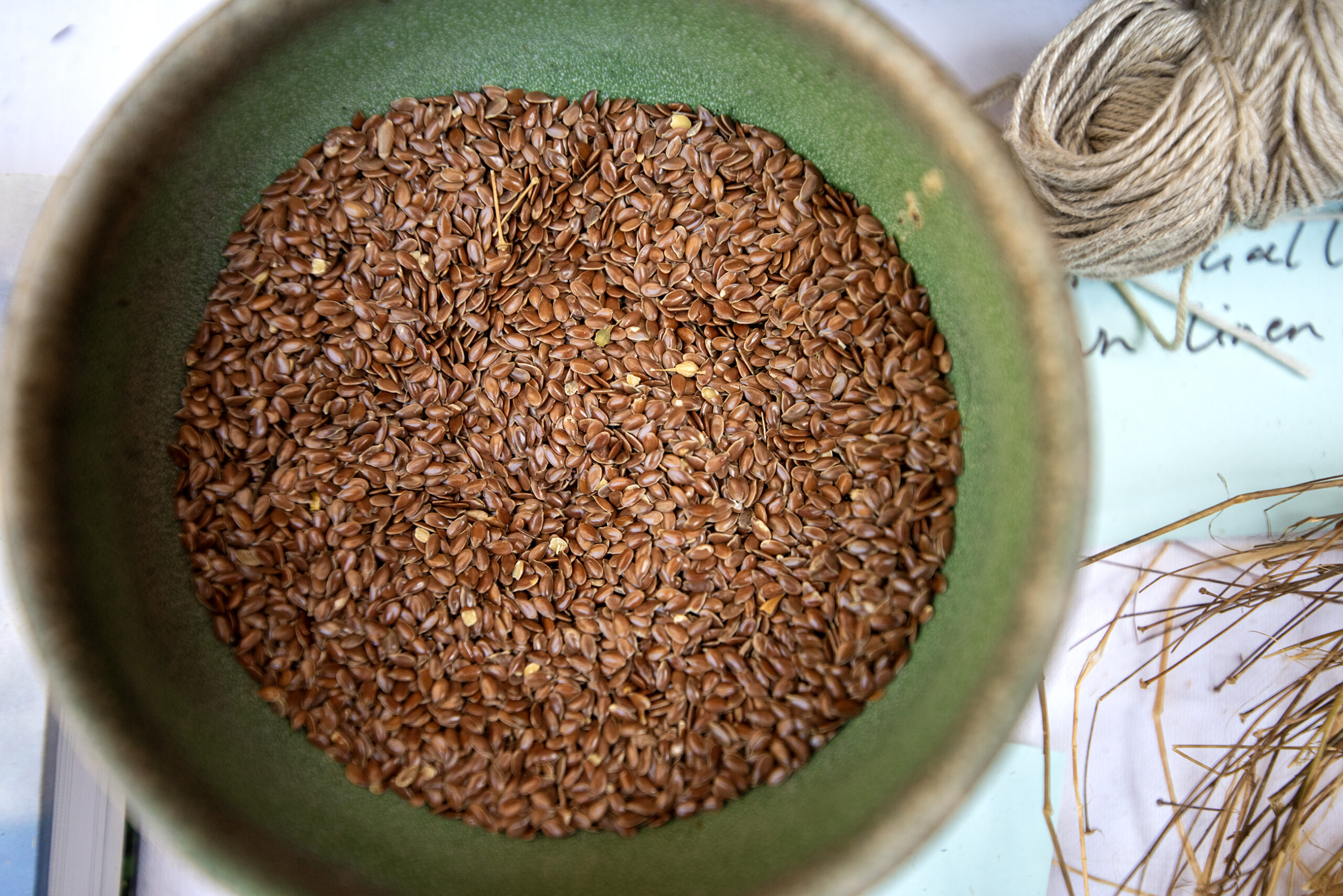
Flax seed are kept in a bowl Thursday, May 8, 2025, at Leslie Schroeder’s home in Madison, Wis. Angela Major/WPR
Schroeder is building support in the agricultural sector.
The Emerging Crops Accelerator program through Extension at the University of Wisconsin-Madison included fiber flax production in its November 2024 strategic plan. The team has supported Schroeder’s studies through supporting her grant applications and finding her farming equipment.
The Wisconsin Farmers Union is also backing Schroeder’s efforts. At its 2024 state convention, members of the farmers union voted to recognize the importance of flax and regional textile production. Tommy Enright is the communications director for the Farmers Union. He said in an email that there’s a growing interest among farmers to produce flax and other fibers, like wool and hemp.
“When our members vote to add a policy like this, it opens the door for us to advocate for resources and investment at the state and federal level, seek partnerships, and help build awareness of fiber as part of a resilient local food and fiber system. Leslie is right- it shows that people are starting to see this work not as a niche or novelty, but as something worth supporting for the long haul,” Enright said.

“Everywhere I go, I drop flax seeds, like Johnny Appleseed,” Leslie Schroeder laughed on .Thursday, May 8, 2025, in Madison, Wis. This small flax plant growing in a pot likely came from her dropping a seed last year. Angela Major/WPR
Schroeder said she hopes the support leads to more farmers diversifying their crops with flax, and spreads an understanding for how to process the plant. For example, retting is an important step in pre-processing flax. It slightly decomposes the plant, allowing the fibers to separate from the shive. How Wisconsin’s weather impacts this step needs to be studied.
“So what I say to people is absolutely get some flax seed, put it in the ground, experiment with the retting process, get to know the plant a little bit, but we’re not ready to scale up to something at an agricultural level yet,” said Schroeder.
That’s because Wisconsin — and the region — also need a large-scale facility to process the flax and spin it into linen, so it can eventually becoming a shirt or a tea towel.
“We don’t have a path to market. So right now, we’re just at this level … it’s very beautiful, artisanal, hand-scaled. What we need is that processing facility that could handle a quarter of an acre. Right now, if you grow that much, it’s gonna be this hand-processing project, extremely labor-intensive,” Schroeder said.
That would take time, money and someone who can “tinker up the equipment” with Schroeder.
This dream of Schroeder’s is not unprecedented. Wisconsin had flax-to-linen facilities during the Civil War era, when the North was looking for alternatives to Southern cotton. The government encouraged farmers in places, like Wisconsin, to grow flax for linen. At one point, there were two linen mills in the state, but they closed by the early 1900s. According to “Wisconsin People & Ideas,” American’s cultural connection to linen frayed as economic forces led to a decline in flax production.
Today, Schroeder has to send fibers to TapRoot Fibre in Nova Scotia, Canada, which can spin her processed flax. She also sends her flax to a papermaker.
Mobilizing a local fiber movement
Schroeder’s dream to bring flax and linen production to the upper Midwest isn’t solely based in aesthetics and artistry.
For many years, Schroeder has been growing and foraging her own food. Inspired by the local food movement, she thought, “What about clothing?”
“Being able to spin up a little piece of rope from nettles or milkweed or dogbane or the linden tree — these wild foraged cordage — I was blown away by the connection that we have ancient to fiber,” Schroeder said. “For tens of thousands of years, people have been making use of this and its commercially spun yarn is still made in that exact same way.”
She believes focusing on local textiles and “slower fashion” could help reduce waste, improve fabric quality and cut back on synthetic materials.
“We can’t talk at all about clothing without talking about what massive problems we have with our current textile industry. [It’s] energy consumptive and resource consumptive, not just from the processing, but all the way through to the end,” Schroeder said. “We’ve got so many synthetic garments and it’s incredibly extractive to produce them. And then wearing them is breaking apart in little bits of plastic. It goes into our water.”
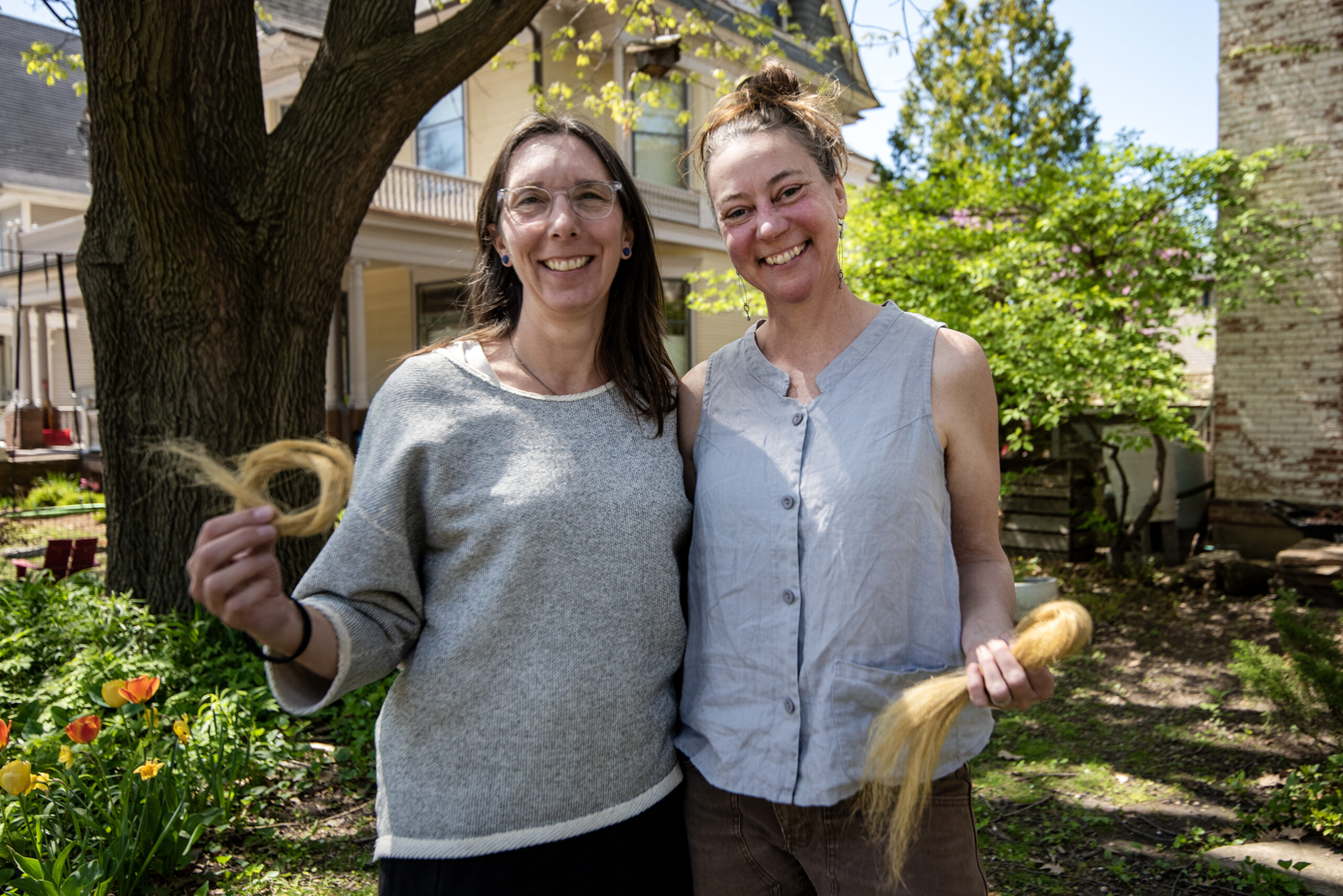
Jessica Becker, left, and Leslie Schroeder, right, hold flax Thursday, May 8, 2025, in Madison, Wis. The duo are curating and producing the Field to Frock events. Angela Major/WPR
These issues — and the local linen dream — will be at the center of the upcoming Field to Frock event in Madison. The event will bring together artists, farmers and anyone with an interest in textiles to learn more about local fibers and try their hand at processing, too.
It’ll also an opportunity to highlight the work of other Wisconsinites who have been involved in the movement, like Woolgatherers, Fibershed Heartland and Madison Weavers Guild.
Schroeder said she’s excited to bring the textile community together.
“There are actually four weaving looms on my block. One day, a neighbor came over and she’s like, ‘Oh you’re growing flax?’”
Schroeder said that neighbor then handed her a handmade linen dishcloth with tiny, blue embroidered flax flowers.
“A lot of people have been quietly dreaming about this and doing a little bit of hand processing. I think that it now has enough energy behind it that we’re stepping into that larger possibility of really having a flax-to-linen textile industry in our state.”
